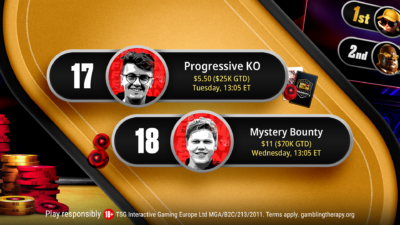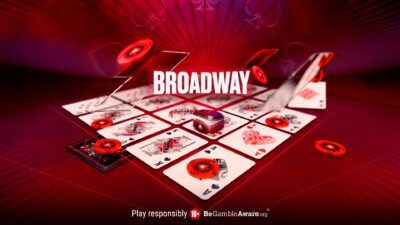After you’ve in a business long enough, and hung out with the same people, they tend to know what you’re going to say – sometimes even before you know what you’re going to say. So every time I’m in the webcast booth with James Hartigan and Joe Stapleton, they have ample opportunity to poke fun at a variety of themes I harp on. Something happens that pushes my buttons and they look at me, roll their eyes, and wait for the line.
It’s like watching Rounders with a bunch of poker junkies who, with perfect timing, say right along with John Malkovich, “Pay the man his money.”
Anyway, today’s theme from Lee’s List of Hot Buttons is the all-in board run-out. As you’ve probably heard me comment before, once the cards are on their backs, the poker is done. As an industry, we’ve done ourselves and the audiences a disservice by often making the all-in showdown the centerpiece of the excitement. I don’t care how many times Graphical Nick, the Custodian of Crawlers on the EPT webcast, puts the “Classic Race Underway” graphic up in the corner – it’s not poker. It’s a roulette wheel spinning, it’s dice tumbling across the felt.
Which is why Steve O’Dwyer and Roger Sippl were my heroes at the PokerStars Caribbean Adventure (PCA) this year. In the $100k buy-in high roller event, it came down to the two of them, heads-up for a whole lot of money. First place was $1.9 million and second place was $1.3 million. Steve had Roger pretty heavily out-chipped when they got into The Pot. And the extremely cool thing is that I happened to be standing on the rail when it happened. I rarely get to just stand and enjoy the poker action, but there I was, with Justin Bonomo and a couple of other high-stakes regulars.
Anyway, Roger raised on the button to not quite three big blinds; Steve called. Flop was Q-8-8 rainbow. Steve checked and Roger bet about 3/4 of the pot. Steve called. Turn 2s. Check, check.
Finally, the river was dealt – the three of spades. Steve checked and Roger immediately jammed for his remaining three million chips (a bit over the size of the pot). Steve immediately dropped some chips behind his stack and even gave a small smile of “Well, I didn’t expect that“. I think he thought that his call on the flop might get him a free showdown. It got him looking into the barrel of an all-in shove for a massive pot.
Justin, standing beside me, gave a short, low whistle. I don’t think he expected the shove either. We watched as Steve struggled with his decision. I won’t even begin to try to see inside the mind of a top-flight tournament player such as Steve O’Dwyer; his thinking processes are no more accessible to me than Chris Thile’s mandolin skills. But there he was, deep in the tank.
Me: “Whatchu think?”
Justin: “I’m pretty sure he’s going to fold.”
On the EPT webcast, Jason Mercier said “I think he’s going to fold…”
More time passed.
Me: “Heh.”
Justin: “Well, I’m becoming less sure…”
Finally, Steve simply looked up and said, “I call.” Roger smiled and said, “Good call,” and turned up JTo. Steve turned up ATo; his ace-high was good.
And that was that – the tournament was over, decided by a decision. Steve and Roger walked to the middle of the stage, embraced briefly, and chatted (presumably about The Pot). I was just delighted – delighted at Steve O’Dwyer’s careful, and ultimately correct1 decision. And I was also delighted with Roger Sippl’s gutsy attempt to win the pot through sheer bluster while having clear blue sky in his hands.
In short, two guys played an awesome poker hand, for a ton of money, and decided the tournament right then and there, with Justin, me, and a handful of other people playing railbird. It was one of those moments that remind me how lucky I am to be part of this game.
And not a roulette dealer.
***
1 I should note that Steve’s decision was correct only in hindsight. Obviously there was a probability that Roger Sippl was bluffing. Steve’s correct play was to call based on his perception of the chance that Roger Sippl was bluffing, relative to the value offered by the pot, and perhaps some intangible factors such as his perception of their relative skill and the flow of the match. If Roger Sippl was only bluffing one out of a hundred times in that situation, then Steve made a (lucky) bad call. But the more likely truth is that Steve made a reasonably accurate read of the situation and made a very good, very difficult call.
Lee Jones is the Director of Poker Communications at PokerStars. He first joined the company in 2003 and has been involved in the professional poker industry for over 25 years. You can read his occasional tweets at @leehjones.
Back to Top






